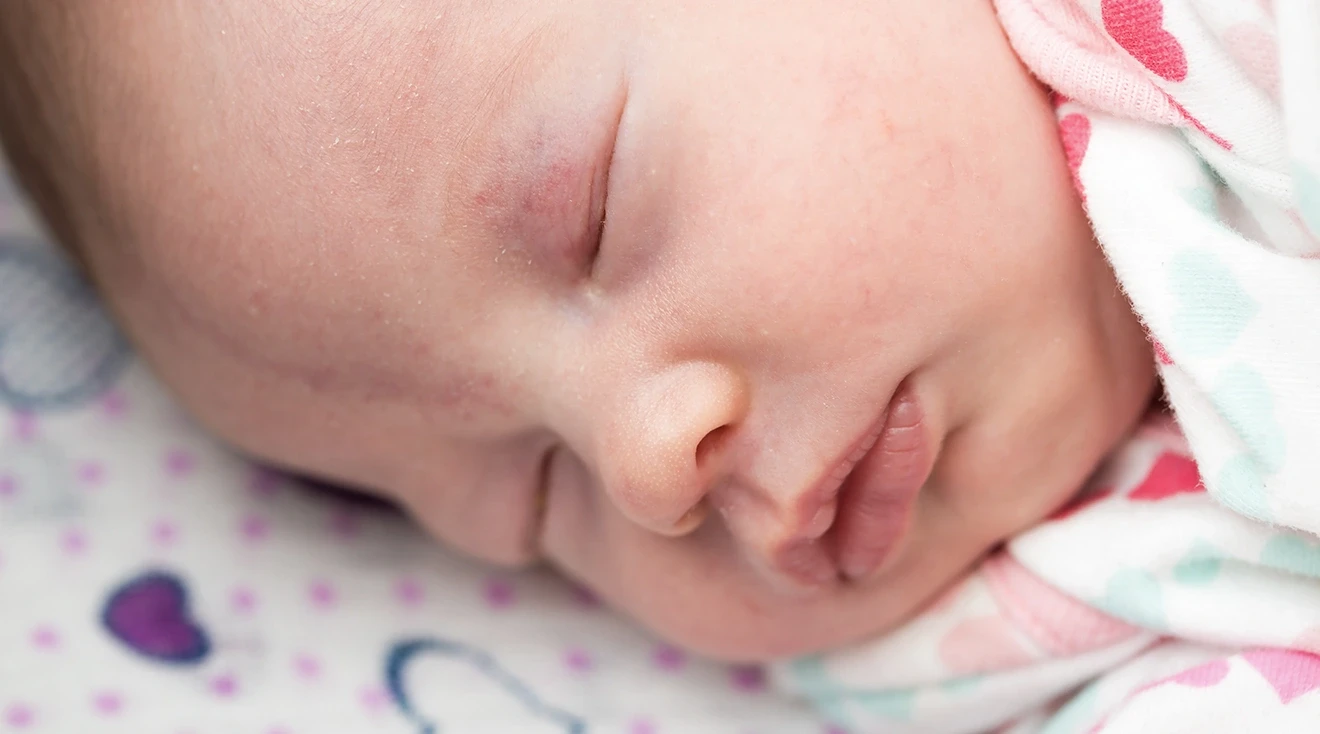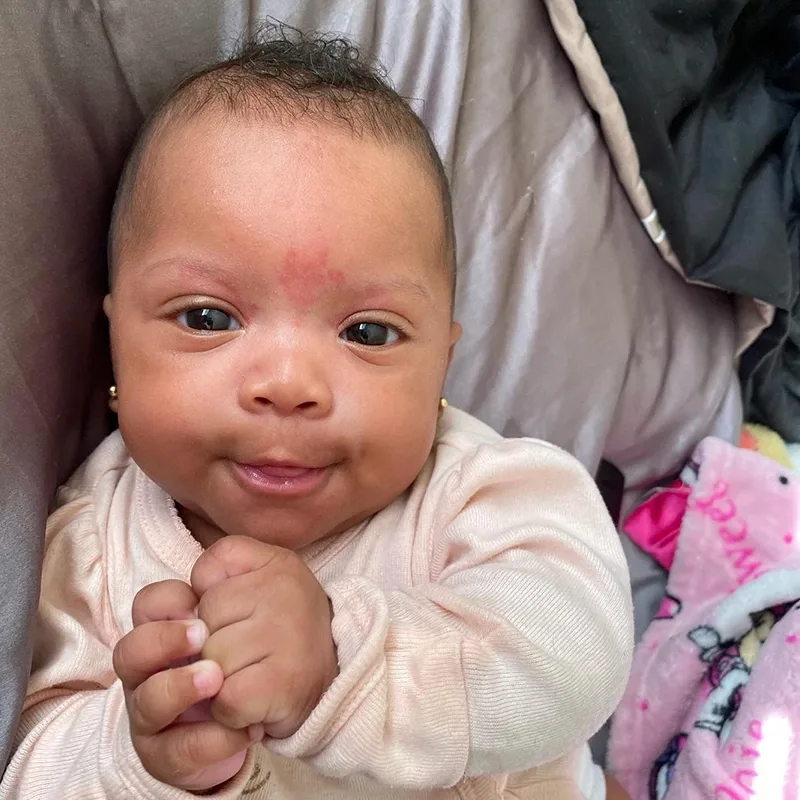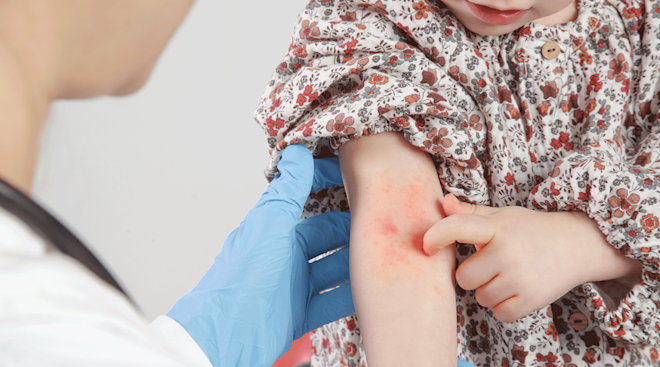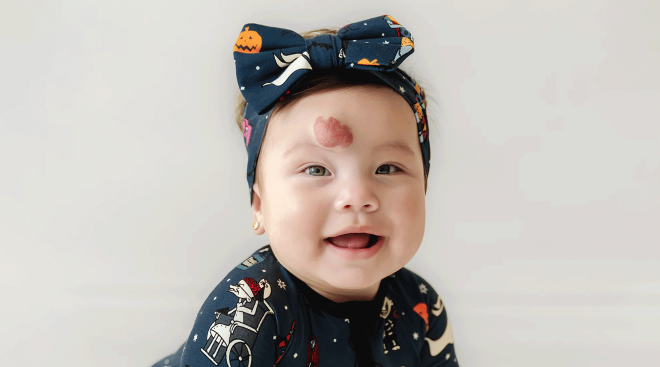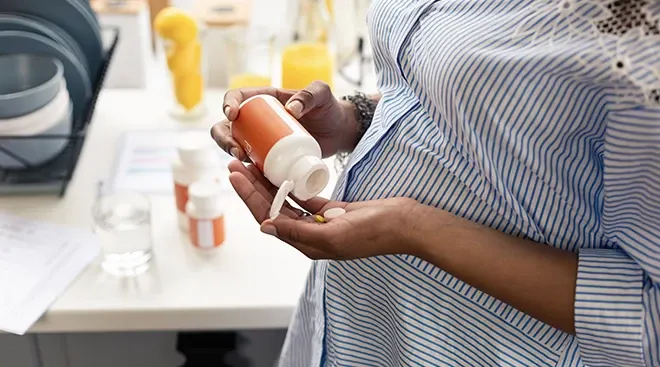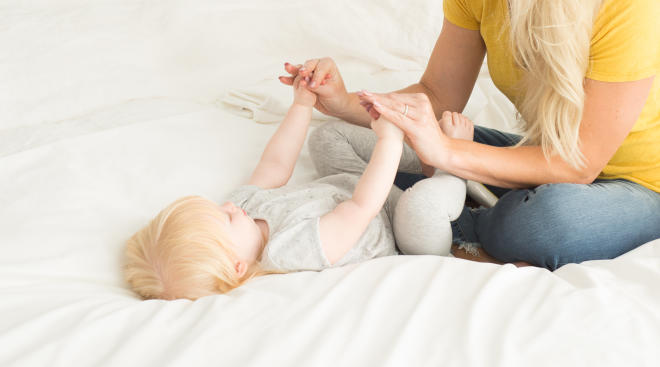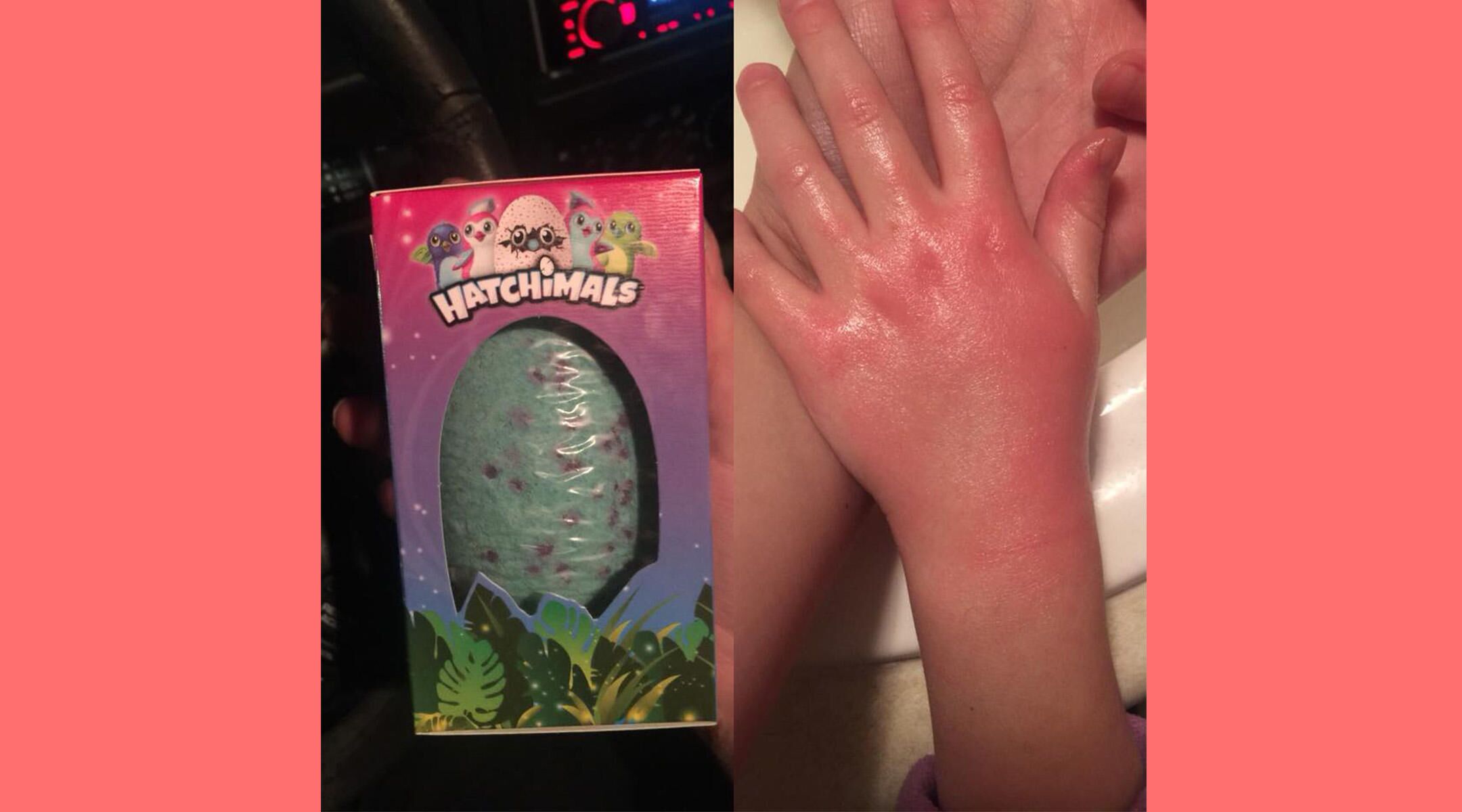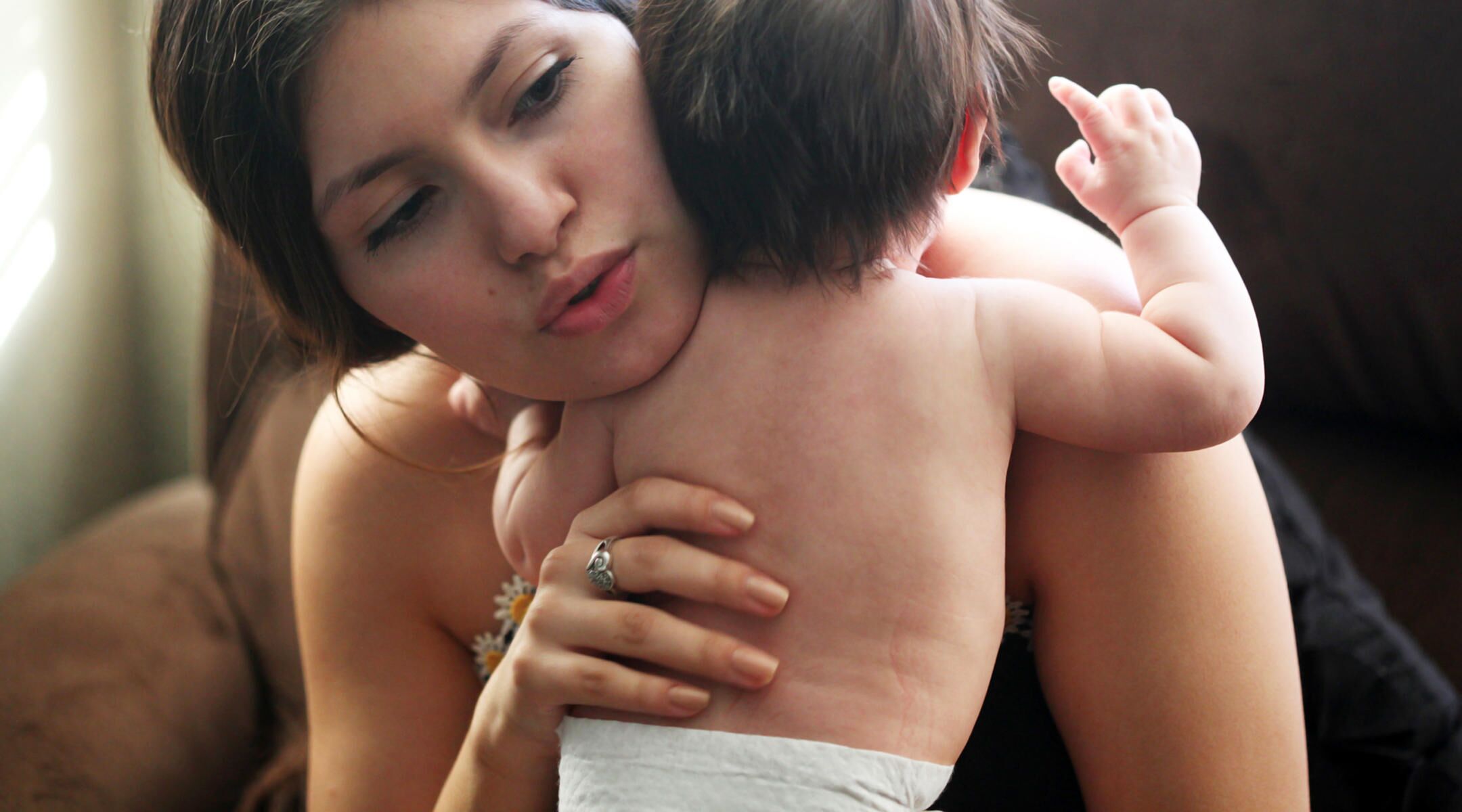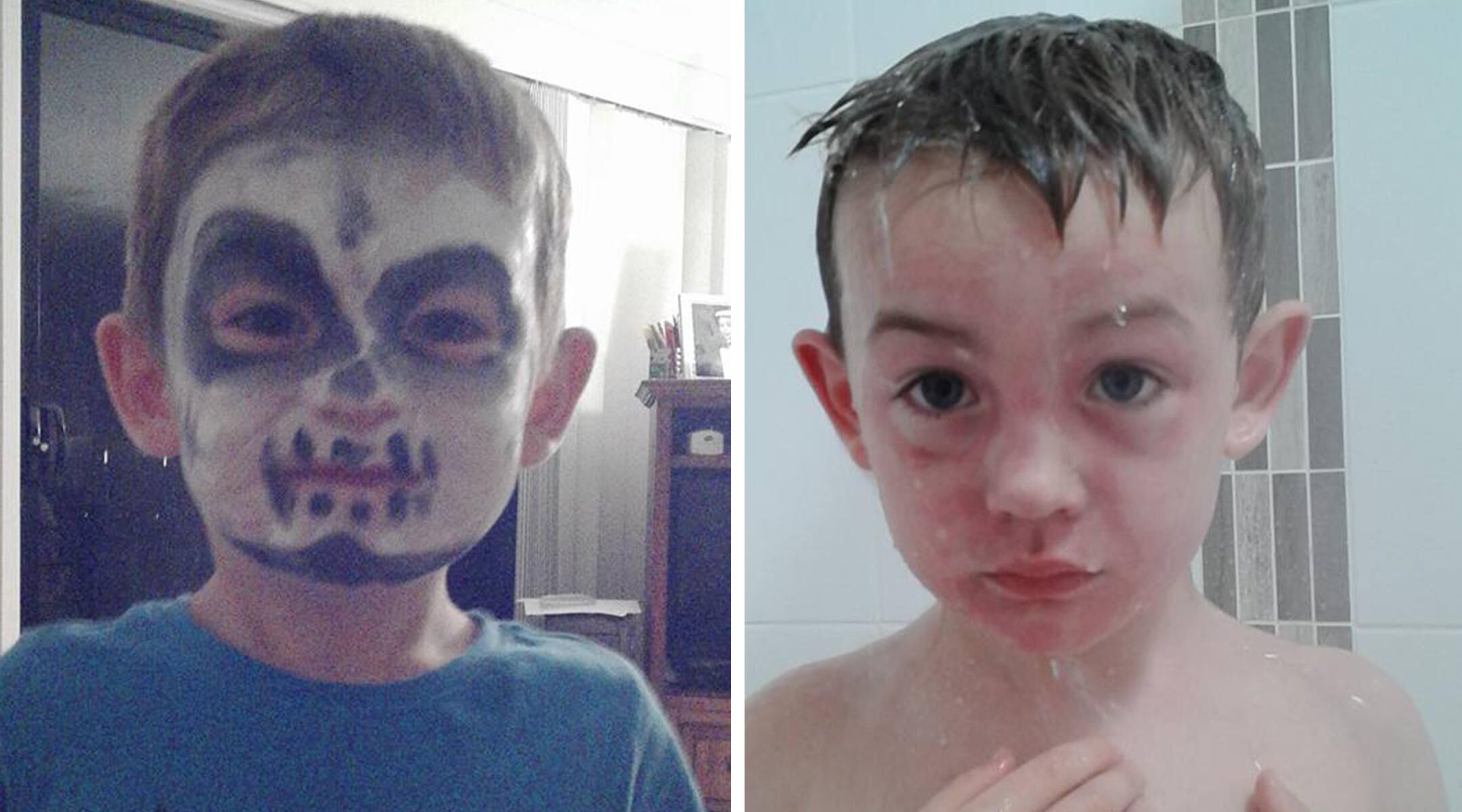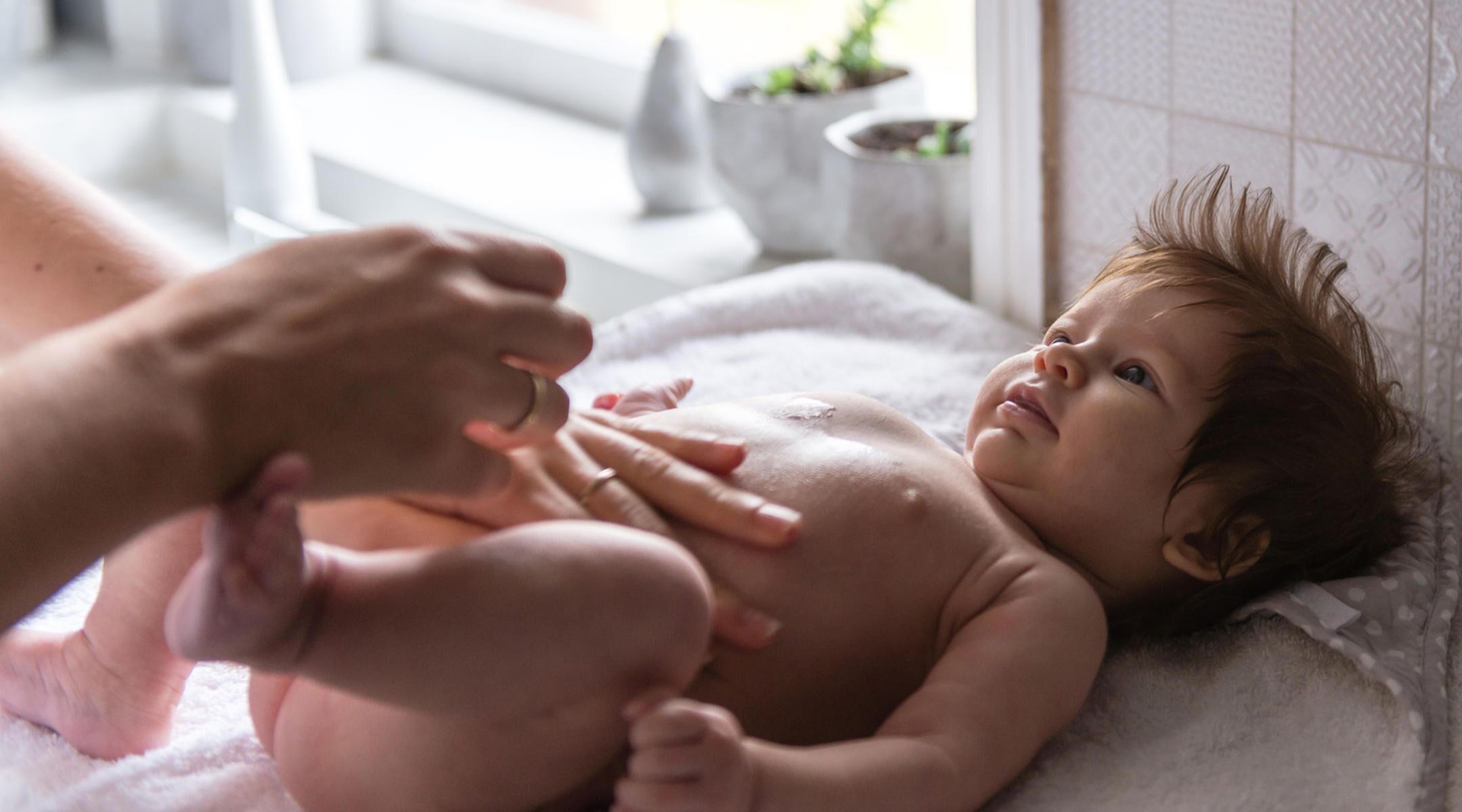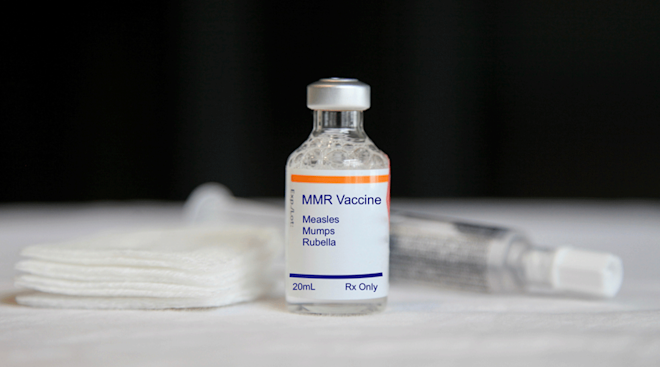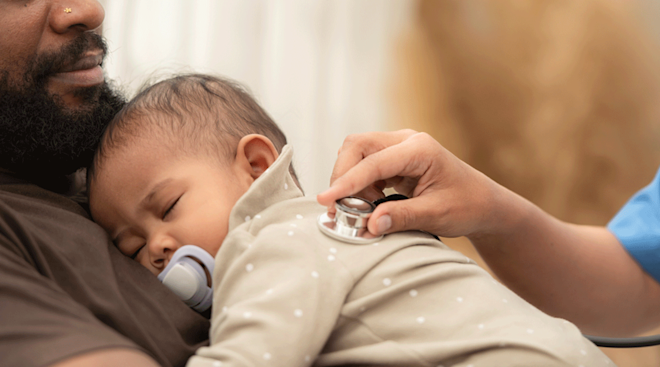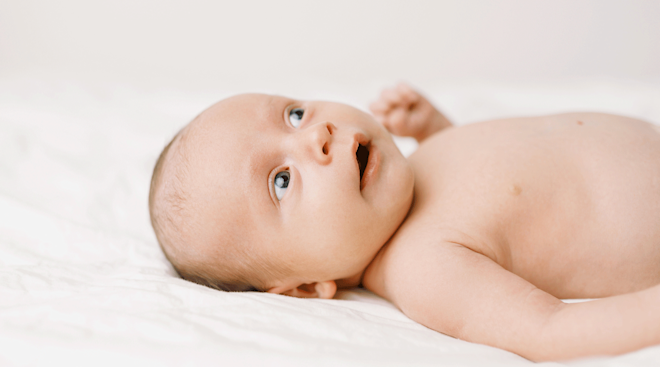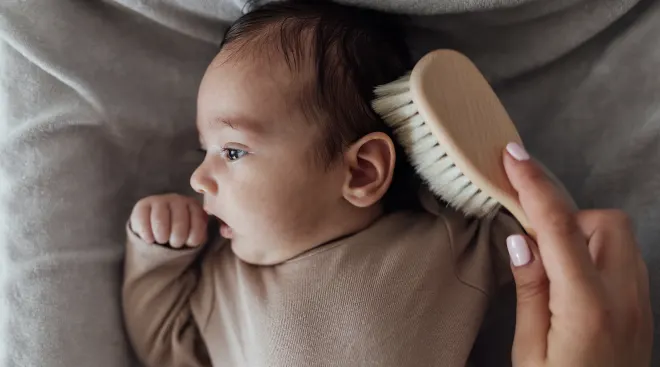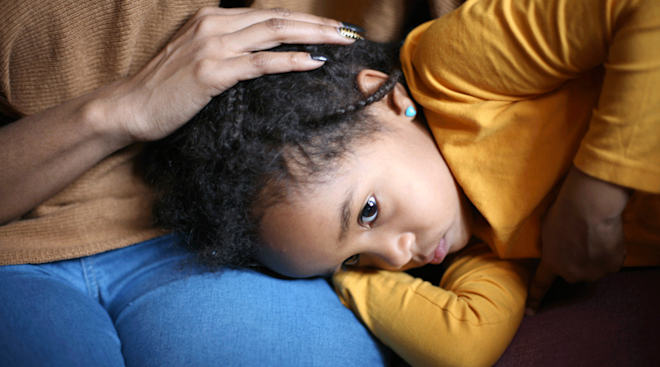What Is a Stork Bite?
Stork bites, salmon patches and angel kisses—oh my! You may have first learned the term “stork bite” during baby’s initial newborn check-up or after googling “red spot on baby’s head”—and that’s essentially all it is: a birthmark. It’s very common too. In fact, you might still have one right now and not even know it: 50 percent of adults are still walking around with their stork bites from birth, according to the Cleveland Clinic. Want to know more? Read on for everything you need to know about your child’s stork bite birthmark.
A stork bite—or nevus simplex in medical terms—is a small patch of pink or red skin that can appear on baby’s forehead, eyelids, nose, upper lip or the back of their neck. “They can be bumpy, raised or flat,” says Jasanjot J. Parmar, DO, a family medicine doctor in Arlington, Washington. It’s a type of birthmark that parents commonly confuse with a rash.
The good news? There’s no need to worry. Nearly 40 percent of babies have a type of stork bite on their skin, according to Texas Children’s Hospital. These harmless birthmarks are caused by a collection of blood vessels clustered close together on the surface of the body. Stork bites typically appear within the first few hours to the first couple weeks of baby’s life.
Signs of a Stork Bite
Wondering if that red patch on baby face is really a stork bite? The American Academy of Dermatology (AAD) lists these telltale signs of a stork bite birthmark:
- Rash-like patch
- Pink, red or salmon-colored spot
- Color will fade if you press on it
- Spot becomes redder when baby cries or is hot
- Patch location is on the face or back of the neck
So why did that red splotch just suddenly appear? Stork bites are caused by the stretching of certain blood vessels during fetal development, notes Mount Sinai’s Icahn School of Medicine. Blood flow increases and vessels are formed under the stretched area to create the red mark you see.
There’s some evidence to suggest a genetic influence too. In other words, if baby has a stork bite, it’s likely that one of the child’s parents had—or still has—one.
What the stork bite myth says
There’s a simple physiological explanation for baby’s stork bite, but there’s also a slightly more fun (and entirely less medical) meaning behind it. Why do they call it a stork bite? The stork bite myth says that these birthmarks appear after the stork delivers baby to you—leaving a mark from carrying your little one with their beak. Of course, now that we’re old enough to understand where babies really come from, we know this is just a sweet story to tell our kiddos. When these birthmarks appear on baby’s face, they are sometimes also lovingly referred to as angel kisses.
Thankfully, stork bites are painless and don’t cause baby any discomfort. “They aren’t painful, but they can turn red when babies are hot or mad,” says Parmar. Remember, a stork bite is just a cluster of blood vessels located closer to the surface of the skin. That’s why this color deepening happens.
Stork bites can appear all around the body, but John Hopkins Medicine lists the common locations as:
- Eyelids
- Forehead
- Back of the neck
- Upper lip
- Between the eyes
Stroke bites can go away on their own without any outside intervention. Parmar says you may notice it fade away in the first few years of your child’s life.
That said, some people have stork bites into adulthood. If the birthmark is located behind the head, it’s more likely to stay put. “On the nape of the neck, stork bites tend to persist with time,” explains Sheilagh Maguiness, MD, FAAD, a board-certified pediatric dermatologist and associate professor at the University of Minnesota. In fact, you may have one as an adult and not even realize it—especially if your hair covers it up.
First, it’s important to remember that stork bites are harmless and don’t need treatment since most birthmarks fade as baby grows. But if you’re experiencing an unwanted stork bite that isn’t in an ideal location or is too large, there are some options.
“Waiting to see if it’ll fade with time is the best course of action. If the stork bite is still particularly prominent, see your doctor to discuss potential treatment options,” advises Maguiness. Medical removal is sometimes possible.
If you’re looking to get a stork bite removed or lightened, your provider might recommend laser therapy. Specifically, pulsed dye laser (PDL) therapy. This is a noninvasive option that gently fades capillaries under the skin and reduces the appearance of stork bites. Maguiness reassures that over a few treatments, it can significantly lighten the appearance of a stork bite. This type of laser is very safe when used by an experienced pediatric dermatologist.
Are there natural remedies to get a stork bite to fade?
Contrary to information you might find on the internet, lightening stork bites using natural remedies isn’t effective. “There’s no way to fade the appearance of a stork bite with topical medications or remedies. Olive oil, lemon juice or any other topical remedy won’t reduce their appearance,” says Maguiness.
Stork bites might look a bit strange at first, but they’re nothing to worry about. Now that you’re equipped with this knowledge, get back to admiring your little one’s adorable tiny features—stork bite and all!
Please note: The Bump and the materials and information it contains are not intended to, and do not constitute, medical or other health advice or diagnosis and should not be used as such. You should always consult with a qualified physician or health professional about your specific circumstances.
Plus, more from The Bump:
Jasanjot J. Parmar, DO, is a board-certified family medicine specialist in Washington State. She helps patients and parents find answers about their family’s health through JustAnswer.com. She received her medical degree from Touro College of Osteopathic Medicine.
Sheilagh Maguiness, MD, FAAD, is a board-certified pediatric dermatologist and an associate professor of dermatology and pediatrics at the University of Minnesota. She is also the co-founder of Stryke Club, where she helps provide clean derm-formulated skincare for men.
Cleveland Clinic, Stork Bite, November 2021
Texas Children’s Hospital, Nervus Simplex
American Academy of Dermatology (AAD), Birthmarks: Signs and Symptoms](https://www.aad.org/public/diseases/a-z/birthmarks-symptoms))
Mount Sinai’s Icahn School of Medicine, Stork Bite
John Hopkins Medicine, Birthmarks in Infants
Learn how we ensure the accuracy of our content through our editorial and medical review process.
Navigate forward to interact with the calendar and select a date. Press the question mark key to get the keyboard shortcuts for changing dates.

































